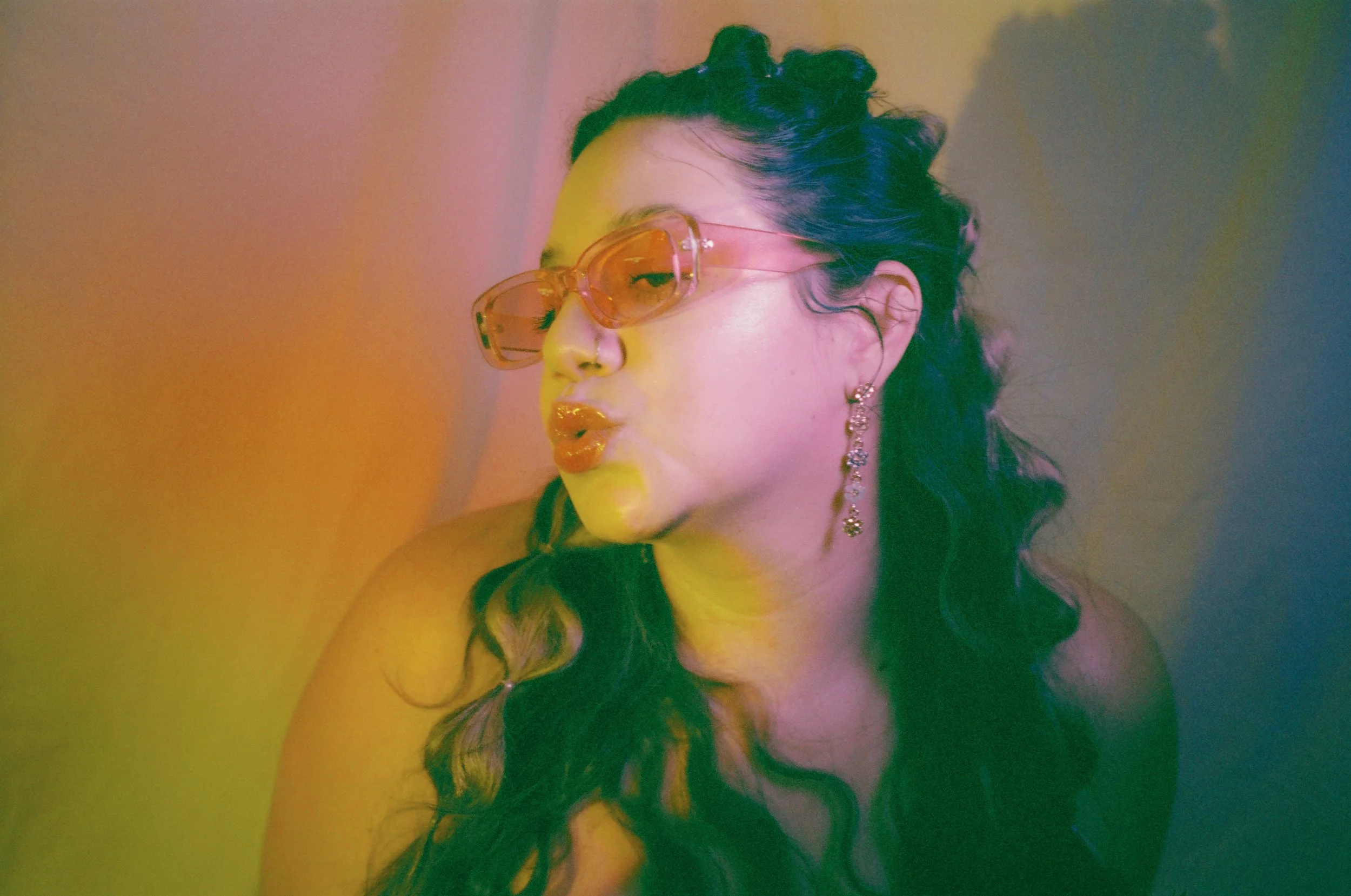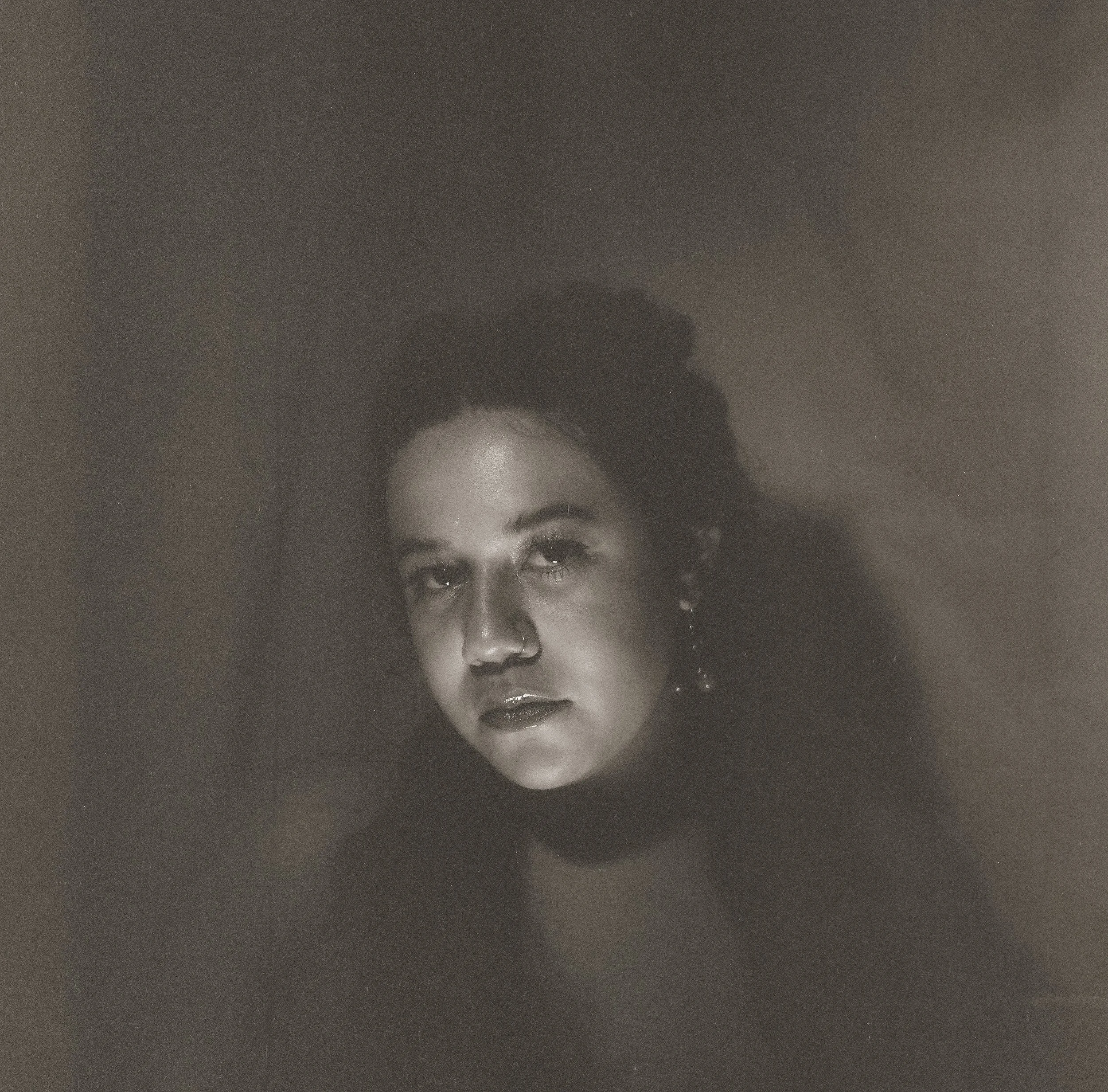Exploring Underrated Film Stocks: A DIY Photoshoot Beyond Kodak
I had the pleasure of directing a laid-back photoshoot to test several underrated "experimental" film stocks. Throughout the shoot, I was at a crossroads, questioning the practicality of these vibrant yet unpredictable rolls in a market run by industry giants like Kodak.
This project isn't just about comparing grains and hues; it's about uncovering the possibility of artistic inspiration despite rising expenses and assessing whether these “quirky” film alternatives can truly hold their ground.
Read more as I explore the value, quality, and creativity of each film stock used. I shot every image in 35mm and 120 film formats, gorgeously scanned by my friends at Nice Film Club.
The Process
Behind the Scenes of the Setup and Photoshoot
I created a DIY studio in my best friend's bedroom, using app-controlled LED bulbs, reflectors, and bedsheets as a makeshift seamless. To add to the vibe, we played an upbeat, early 2000s playlist in the background as we captured images using several rolls of underdog 35mm and 120 film. My goal was to reflect the character of my chosen stocks — fun, playful, and lighthearted. I've discovered that embracing experimentation rather than resisting it yields more productive results.
My friend Aubrey posed in front of the sheet against lights of various colors dancing across her face. She wore vibrant attire rich in texture, complemented by bright eyeshadow to bring an extra element of flair. I intended to shoot the same subject across each roll, enabling a more effective comparison and analysis of the film stocks. Although, in hindsight, an outdoor setting would have provided more variety, I was nonetheless thrilled with the results achieved in our controlled, studio-like environment.
The film scans provided by Nice Film Club were beautifully neutral, giving me the flexibility to perform color corrections where needed and adjust the RGB settings for the shots that weren't properly exposed. Even though many of these film stocks are naturally over-saturated, I had the freedom to adjust each image to suit my preference. Each frame presented a sweet surprise, offering an easier shooting-to-editing process different from what I'm used to.
Film Stocks I Used
Sunstroke 200 Color Negative 35mm Film



Sunstroke 200 Color Negative 35mm Film: This 35mm film has warm tones & bright red light leaks effects.
Moonstruck 200 Color Negative 35mm Film



Moonstruck 200 Color Negative 35mm FIlm: This 35mm film has cool, moody tones with purple shadows and reimagined hues.
Lomography Postdam Kino 100 Black and White Negative 120 Film
Lomography Postdam Kino 100 Black and White Negative 120 Film: This captivating emulsion stock transports New German cinema’s analog elegance to the medium format film realm.
Cinestill800T 35mm Film
Cinestill800T 35mm Film: This 35mm film is explicitly engineered for challenging low-light tungsten scenarios.
Delight Art 100 Color Negative 35mm Film



Delight Art 100 Color Negative 35mm Film: This 35mm film has bright saturation and colorful undertones, used for various subjects to add an extra pop of color.
Film Stocks I’d Like To Use
LomoChrome Purple XR 100-400 Pétillant Edition Color Negative 35mm Film: This 35mm film Combines rich, earthy reds with sharp plum notes and a smooth violet palette.
Wolfen PF2 35mm Black & White Film: This 35mm film stands out for its exceptional black-and-white prints from standard negatives with cinematic grain and compression.
The Pros
My Appreciation and Satisfaction with the Final Outputs.
I was craving this creative challenge: working with 120 and 35mm film I wouldn't normally pick and not knowing what to expect made the project more thrilling.
Sunstroke imparts a psychedelic warmth, while Potsdam Kino evokes the eerie ambiance of my favorite 1940s short film classic, “Meshes of the Afternoon.” Film stocks that depart from tonal precision introduce an extra dimension of visual intrigue; they hold the kind of character that simply can't be replicated by Kodak's top-selling Portra 400.
Where there's a lack of uniformity, character emerges. In frames where the color appears unbalanced, texture is gained. There's a beauty in the surprise.
The Cons
Aspects I Would Personally Revise
Honestly, I'm not knowledgeable in studio lighting, and the bedroom used for our shoot had limited natural light sources. Consequently, each film with a box speed of ISO 100 or 200 had difficulty performing in the low light.
The specific RGB colors I chose for certain poses caused graininess, making Aubrey’s face appear hazy in the photos. The bold colors, such as deep violets or reds, gave the photos a heavy feel, especially with the Delight Art 100 film stock.
Honest Thoughts
Would I Reinvest in These Film Stocks?
Overall, this project was truly enjoyable and rekindled a sense of playfulness in my work. Gathering my friends for an afternoon of shooting followed by dinner reminded me of the early days of my photography journey, when my sole motive was to create cool things for the sheer joy of it. Having spent nearly a decade maturing into my professional photography career, breaking away from the routine is essential for sustaining creative vitality.
However, does this mean I'm ready to invest nearly $10 per roll, plus an additional $9.99 for development and scanning, for every shoot? Probably not. That being said, I haven't yet explored how these film stocks perform in natural, bright daylight — my typical shooting environment. So, there's room for further testing. Nonetheless, based on outdoor results I've seen from others, these stocks appear just as experimental and unpredictable as they were during my studio sessions.
These 120 and 35mm film stocks are too pricey to justify use in high-budget projects that demand consistent results. I've relied on the Kodak Portra series for most of my film photography career for good reason, as have many others. Brands like Kodak maintain a stronghold over the film market because of their superior craftsmanship and intricate knowledge of the chemical requirements for producing higher-quality rolls.
Ultimately, my decision relies on the nature of the project. Suppose the aim is to achieve a quirky, avant-garde look with fun effects. In that case, I'm all in for stepping out of my comfort zone and embracing the challenge.
Film costs need to be more affordable for me to experiment more frequently. However, I'm fully sold on the Potsdam Kino 100 for future black-and-white projects — it's unique in the best way. As for the rest, they may not be my go-to options for every project, but I recommend treating yourself periodically to break free from the creative constraints that routine can impose.
Let loose and have some fun because honestly — no one is as invested in the outcome as you are.








